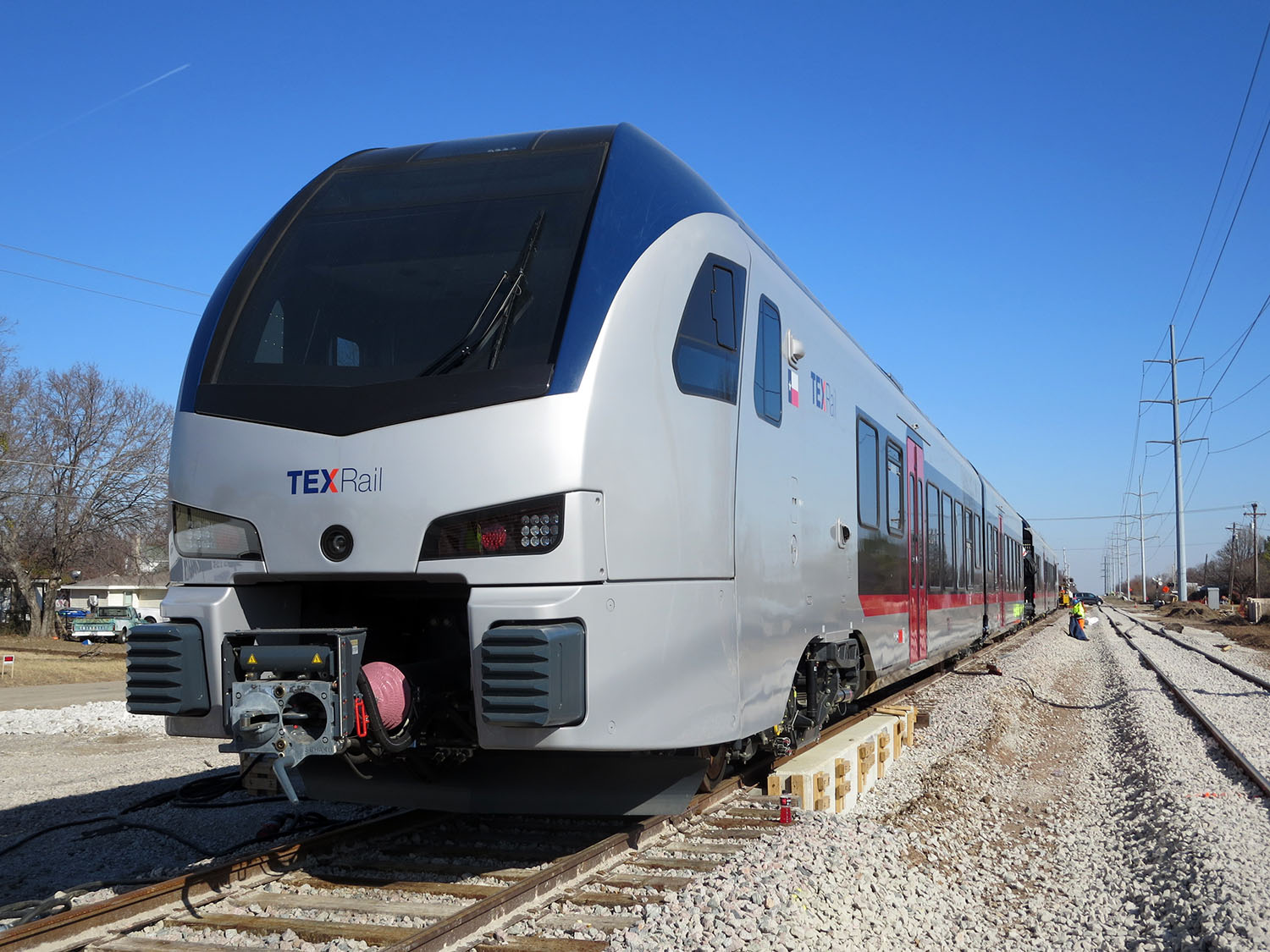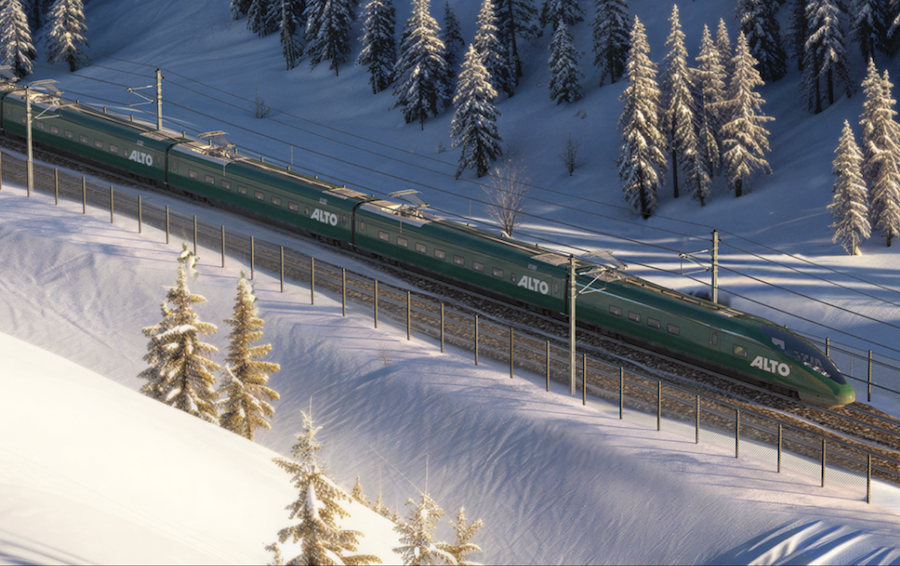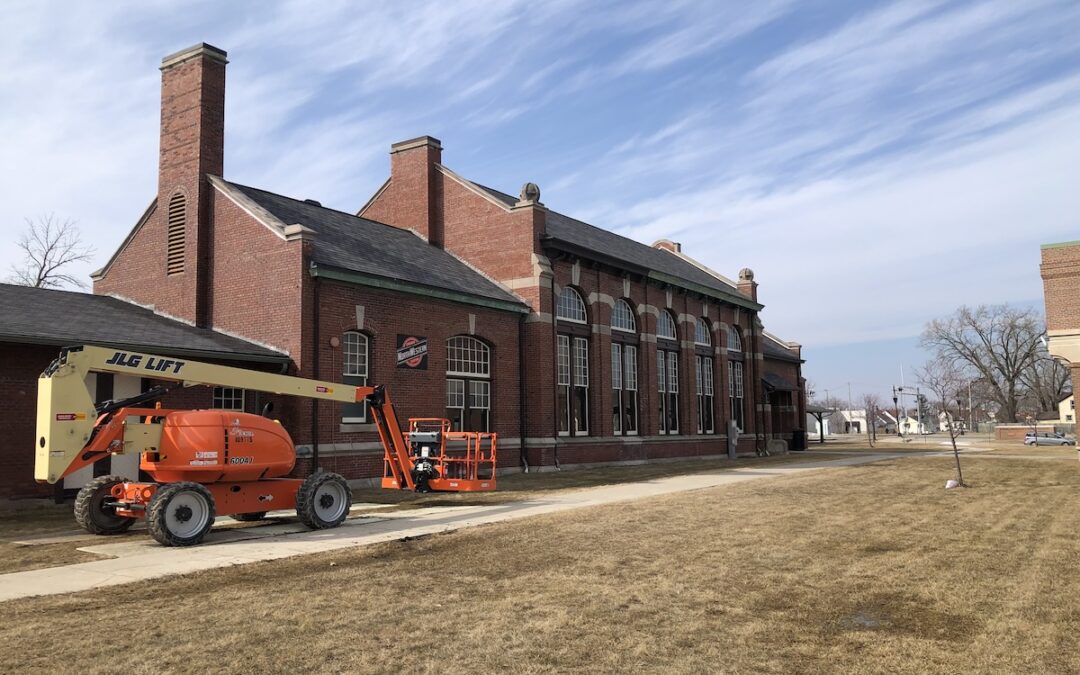Canada is moving to smooth the way for a roughly 600-mile high-speed line that will connect Toronto and Quebec City with trains running at top speeds of at least 186 mph. Canada’s Transport Minister, Steven Mackinnon, announced this week that work is expected to begin...
Last week we told you how Brightline is illuminating the way for modern train equipment in the United States. There’s another new service coming to the U.S. this year that’s using innovative equipment: TexRail. The new commuter train will link downtown Fort Worth with the Dallas/Fort Worth International Airport, one of the busiest airports on the planet. It also connects with existing Trinity Rail Express commuter trains and local transit.
TexRail will show how modern equipment makes for a more comfortable and efficient commuter service, just as Brightline is doing for intercity trains. TexRail is using FLIRT, a lightweight diesel multiple unit design from Stadler that has been popular around Europe for more than a decade. This will mark the design’s first use in the U.S., and they will be the first trains here to take advantage of the FRA’s revised safety standards that allow lighter trains.
(American trains have long relied on the antiquated idea that heavy trains are safe trains. For TexRail, positive train control will help prevent collisions, and a crash energy management design protects occupants in case of a collision.)
Each TexRail train set consists of 4 articulated cars with a diesel power unit in the middle. The train seats 229 people, and the capacity including standees is 488. There are driving cabs on both ends. The entire train, fully loaded, weighs 385,000 lbs, or about as much as a regular diesel locomotive plus a single passenger coach. For comparison, a typical Metra commuter train with a locomotive and seven coaches is about three times heavier than a TexRail train.
Lighter trains accelerate and brake faster than heavier ones, which is critical for a commuter service with frequent stops. They use less fuel, create less emissions, and cause less wear and tear on tracks than heavier trains. This makes them cheaper to operate, allowing commuter services to run more frequent trains. They are also quieter than traditional locomotive-hauled trains, which communities along the line will appreciate.
Lightweight diesel multiple unit trains like the ones TexRail will use would make it more affordable for commuter services like Metra to add more trains during off-peak hours. Longer, higher-capacity multiple unit sets and traditional locomotive-hauled trains could be dedicated to peak times.
Equipment like this is also ideal for shorter intercity routes, like Chicago to Milwaukee. It could be used to more affordably provide service on new routes like Chicago to Rockford and Dubuque, or Michigan’s Coast to Coast service. The train could be outfitted with more appropriate seats and a cafe/lounge for these longer trips.
Commuters will enjoy the modern design of TexRail’s trains. Bridge plates that automatically extend from the doors will meet platforms to make for fast and easy level boarding. (The stations will have slightly elevated platforms that will not interfere with passing freight trains.) Wheelchairs, bikes and luggage roll right on, with no stairs to climb. This will get passengers on and off the train quickly and keep station stops brief. The interiors are bright and open, with large windows and overhead luggage racks. There will be USB power outlets for charging gadgets. The articulated design makes it easy and safe to pass between cars throughout the entire train.
The promise of a new way to get around is already starting to change attitudes in the auto-centric suburbs of Fort Worth. The town of Grapevine, near the airport end of the line, is building a large, mixed-use development around its TexRail station.
We look forward to seeing TexRail in action, and having an example of modern commuter train equipment providing fast, frequent and reliable service in the U.S.
Articles we enjoyed
What’s killing CTA train ridership? Two four-letter words. (Uber and Lyft)
How Toronto Turned an Airport Rail Failure Into a Commuter Asset
Two executives appointed to California High-Speed Rail Authority
Florida legislature considering high-speed rail safety bill, including fence line
WSDOT looks into high-speed train from Spokane to Seattle
Spanish prime minister inaugurates Valencia-Castellón high-speed railway
The Latest from HSRA
Our Latest Blog Posts
Check out the latest news, updates, and high speed rail insights from our blog!





